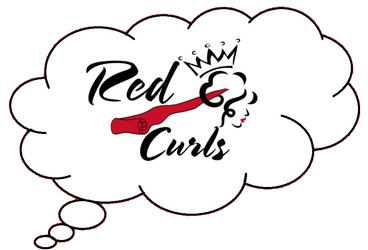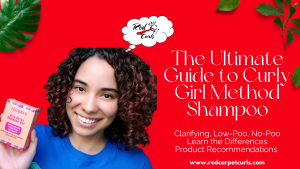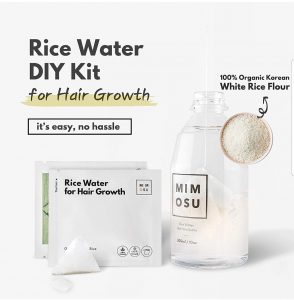What is Hair Porosity?

Have you ever heard of Hair Porosity? It might sound fancy, but it’s actually a pretty simple concept. Your hair’s porosity refers to the way your hair cuticle layer absorbs and holds onto moisture.
Picture the cuticle as the outermost layer of your hair, creating a protective barrier for every single strand.
If your cuticle is healthy, it’s smooth and shiny, with all the “shingles” laying perfectly flat. This means your hair is able to lock in moisture and keep it there for a longer period of time.
But if your hair cuticle is damaged, you might notice gaps or holes in those shingles. This can cause moisture to “leak out” and leave your hair dry and brittle.
Why Does Knowing Your Porosity Matter?

If you want to achieve stunning hair without emptying your wallet, understanding your hair porosity level is the key. Essentially, your hair porosity level determines how your hair behaves – and it’s a crucial factor in achieving beautiful definition.
If you have high porosity hair, this typically means that the cuticle layer has many gaps, holes, or tears. Unfortunately, this makes it extremely difficult for your hair scales to seal properly, leaving your hair devoid of essential moisture and prone to damage from chemicals such as hair color. The results are often frizzy, brittle, and undefined hair, with split ends and breakage not far behind. Hair color also fades faster with high porosity hair.
But fear not! If you do have high porosity hair, all hope is not lost. With a little extra TLC – in the form of deep conditioning twice a week and heavier ingredients like oil and butter – you can help create an artificial seal or barrier until your cuticle layer repairs itself. And before you know it, your hair will be shiny, healthy, and ready to take on the world.
If you have low porosity hair, you’re in luck! Your hair is typically healthy and shiny, but the biggest challenge is keeping it moisturized.
Those stubborn cuticle scales don’t like to lift up on their own, so it can be tough for products to penetrate and work their magic. However, if you neglect to moisturize your hair, it can become dry, brittle, dull, and prone to breakage.
Yikes! So, what’s a low-porosity gal to do? Thankfully, there are some tricks of the trade. For starters, try using indirect heating caps, like the Thermal Haircare Hot Head, to give your deep conditioning treatments a boost. The gentle heat can help lift those cuticle scales and allow your hair to soak up some much-needed moisture.
Also, be careful with heavy, buttery ingredients that can seal up your hair “too well” and cause pesky build-up and frizz. Instead, opt for lighter options and remember that moisture is key. Keep your locks happy and hydrated!
Have you ever found yourself standing in the hair care aisle, completely overwhelmed by the endless selection of products? Well, fear not, because understanding how your hair accepts and retains moisture is the first step in picking the perfect product for your hair strands.
When it comes to naturally textured hair, products can be a lifesaver in supplementing the moisture our hair may be lacking. But don’t worry, you don’t need to be a hair executive to pick the right one. In fact, keeping it all-natural and simple is the way to go. So, next time you’re on the hunt for your hair’s new BFF, think about what your hair needs and go natural!
Can Porosity Change? If So, How?
Did you know that your hair’s porosity can change? It’s true! Genetics play a role, but damage is the main culprit for porosity issues. The Journal of Investigative Dermatology Symposium Proceedings calls this increase in porosity “weathering,” which is the slow breakdown of the hair cuticle and cortex from root to tip due to everyday wear and tear. This is especially prevalent in long hair, and can lead to split ends, damaged cuticles, and eventually, breakage. It’s important to take care of your hair to prevent weathering and maintain healthy hair strands.
Are you tired of wondering why your once glossy locks seem dull and damaged? You may be experiencing an increase in damage to the cuticle, caused by a variety of factors from natural wear and tear to external exposure. But did you know that even seemingly harmless hair care practices, like excessive shampooing or tight buns, could be contributing to the problem?
And let’s not forget about thermal heating methods, like straightening or bleaching, which can wreak havoc on your strands. Speaking of bleach, did you know it’s a powerful chemical that breaks down the existing melanin in your hair? The longer the bleaching time needed, the harder it is on darker hair. And for those with red hair, prepare for an even trickier process.
The oxidation reaction that occurs during this chemical process can destroy the strongest bonds in your hair, known as disulfide, and leave your cuticles even more porous. So, next time you’re in the market for a hair care routine, be mindful of the products you use and the methods you employ. Your hair will thank you in the long run!
Did you know that chemical damage to your hair nearly triples the hair surface area in the first minute? That’s what researchers found in a 2008 study published in the Journal of Cosmetic Science.
This is due to an increase in the number of pores, followed by a sudden drop after ten minutes of damage, from smaller pores breaking down into larger ones. So, be gentle with your hair and minimize the damage!
It takes longer to heal and get to the level you want the more damage you expose your hair to.
If your hair started out very damaged and high porosity, you may be able to get it to an ideal porosity, but sorry to break it to you, not low porosity. Low porosity hair is often determined by your genetics. On the bright side, if your hair started out as low porosity, it means it’s already healthy, just dehydrated. So, keep up with effective care practices and your hair will remain low porosity and luscious!
Tips to Improve Porosity
Are you struggling to keep your hair moisturized? Maybe you’re not sure what your hair’s porosity level is and how that affects your routine. Luckily, we’ve got you covered with some helpful tips! In the video above, you can find out how to determine your porosity level and what that means for your hair care.
Then, head over to our articles for even more detailed advice. If your hair has high porosity, check out our 7 tips here. And if your hair has low porosity, click here for my expert tips. Say goodbye to dull, dry hair and hello to a healthy, hydrated mane!
My ultra-quick lesson in hair porosity has come to an end. I hope you learned a lot and can now make more informed decisions when it comes to caring for your mane. So, whether you have high or low porosity, there are plenty of styling tools and techniques available to help keep your strands looking glossy, luscious, and downright fabulous. Don’t forget that the best way to know what will work for your hair is trial and error — playing around with different products, treatments, and oils until you find the combo that looks best on you!
Still unsure about what level of porosity your hair has? Consult with a professional for further guidance. And if you still have any questions about all things hair-related, don’t hesitate to comment below or get in contact with me directly by email.
Thanks all — happy styling!




